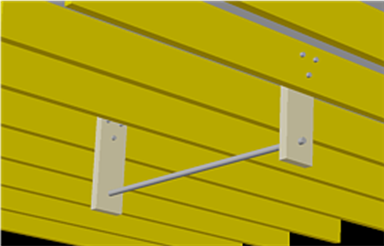Department of Defense and Veterans Affairs officials are working out the details of a new education benefit recently approved by Congress that goes into effect Aug. 1, 2009.
“The absolute most important part of the new G.I Bill is that none of it takes effect until next year,” said Rita Hughson, the chief of education and training at Bolling Air Force Base, D.C. “No one should make any definite plans until the details are worked out.”
The new education bill, commonly called the Post-9/11 G.I Bill, will govern payment and reimbursement plans for veterans and servicemembers who seek to further their education. The new plan will be open to most servicemembers who served on active duty after Sept. 11, 2001. This includes people who have not been eligible for the Montgomery G.I. Bill, such as Air Force Academy or ROTC graduates, those who declined to participate in the program, and those whose service started before it went into effect in 1985, she said.
According to Ms. Hughson, the implementation of particular benefits and how they will apply to former and current servicemembers have yet to be established. There are, however, a few facts that are known since the bill was signed into law:
TUITION — The Post-9/11 G.I. Bill will cover tuition with payments sent directly to the school. The formula for determining the amount of tuition and fees paid will be based on the highest cost of a state-supported bachelor’s degree program. The tuition amount will be paid directly to the college.
HOUSING — A housing allowance will be made available to prior servicemembers who attend as civilian full-time students. The rate will be that of a staff sergeant with dependents.
BOOKS & SUPPLIES — A maximum of $1,000 per year will be allotted to the member to cover the costs of books and supplies needed for classes. The stipend will be divided by terms, so if someone attends a two-term school, the allotment will be $500 per semester, whereas the student will receive $333 if they attend a three-semester school.
TUTORING — $100 a month for 12 months will be available for tutor programs should the servicemember require extra help outside of his or her studies.
AVAILABILITY — Servicemembers can take advantage of the program up to 15 years after they are honorably discharged or retire from the service.
CERTIFICATION — An extra $2,000 is available to pay for one license or certification test as approved by the VA.
Get an overview of the New GI Bill.
Besides the listed benefits, a portion of the tuition stipend, as well as the tutoring allowance, may be available for servicemembers to transfer to family members. Many of the details for this, however, are still being worked out between DOD and the VA, Ms. Hughson said.
Although the Post-9/11 G.I. Bill tuition benefit will be available to most people while they are on active duty, it is actually most advantageous to use all the benefits after separating, Ms. Hughson said.
“There are so many other educational programs and benefits people can take advantage of while they’re on active duty, like the various free tests for college credit and tuition assistance funding,” she said. “But just like the current G.I. Bill, people will get the greatest benefit if they wait until they are no longer serving on active duty before they begin using it.
“That way they have the option to use all their G.I. Bill benefits for the longest amount of time,” she added.
Once the Post-9/11 G.I. Bill becomes available Aug. 1, 2009, Ms. Hughson expects people who have already elected to participate in the Montgomery Bill program will have the option to use the new plan, if they wish; however, it may be in a member’s best interest to stick with the Montgomery Bill for certain distance-learning programs or if they would prefer money be sent directly to them, Ms. Hughson said.
“Whatever they decide to do, people should do as much research as they can as details become available,” she said. “As is normally the case with legislation, details remain sketchy until implementation guidance is made public, and since nothing goes into effect until August of 2009, people shouldn’t make any sort of determination until then.”
Still confused about the New GI Bill? Get answers to frequently asked question.

 ,
,